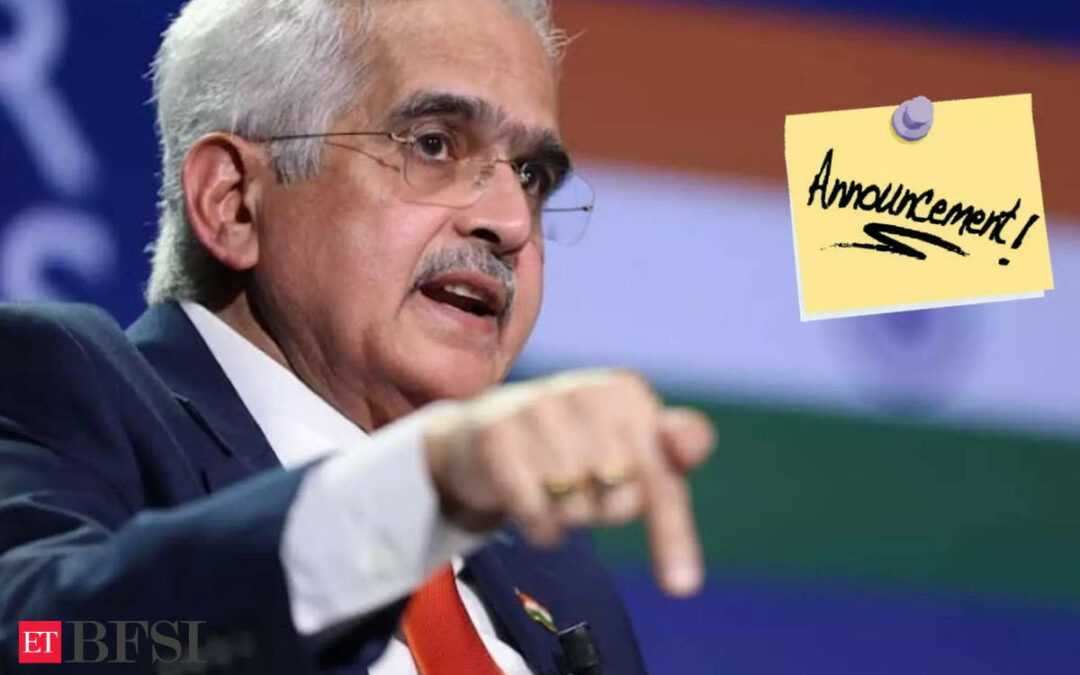RBI MPC Highlights: After detailed assessment of the evolving financial developments, the six-member monetary policy committee (MPC) has decided unanimously to keep the policy repo rate unchanged at 6.5 per cent for the fifth consecutive time.
Announcing the bi-monthly monetary policy, RBI Governor Shaktikanta Das highlighted that following the recent policy adjustments, CPI headline inflation demonstrated a decline to 4.9 per cent in October, down from 7.4 per cent in July. The reduction in core inflation signifies the effectiveness of monetary policy measures in achieving disinflation.
“Despite positive indicators in the near-term outlook, there is a cloud of uncertainty due to potential risks associated with food inflation, which could result in an inflationary upswing in November and December. It is crucial to monitor this situation for possible second-round effects. To ensure the comprehensive transmission and stabilization of inflation expectations, it is imperative to maintain an actively disinflationary monetary policy,” Governor Das said.
The central bank of India has opted to maintain its inflation projection for the current fiscal year at 5.4%, despite apprehensions regarding the escalation of food prices, fluctuations in crude oil expenses, and the potential for domestic economic growth to exert inflationary pressure.
On GDP growth numbers, the governor notified that the anticipated growth for India’s economy in FY24 is now set at 7 per cent, with projections of 6.5 per cent and 6 per cent for the third and fourth quarters, respectively. For the first three quarters of FY25, the GDP growth rates are estimated at 6.7 per cent, 6.5 per cent, and 6.4 per cent, sequentially.
Apart from announcing the usual GDP growth numbers, Inflation forecast data, Das also spoke about laying out additional measures and reviewing existing frameworks in certain areas. Here are some major RBI MPC highlights:
1. Review of the regulatory framework for hedging of foreign exchange risks:
With an aim to aims to strengthen the forex derivatives market by improving operational efficiency and facilitating user accessibility, the RBI has revised the existing regulatory framework governing forex derivative transactions and unified it into a comprehensive master directive.
On the sidelines, Governor Das announced that India’s forex reserves reached $604 billion for the week ending 1 December, 2023. This marked an increase of $2.54 billion compared to the previous week’s reserves, which stood at $597.94 billion as of November 24.
2. RBI to expand connected lending
Governor Das pointed out that the extant guidelines on connected lending, which pertains to the ability of individuals to exert control over a bank’s proprietorship, facilitating the provision of loans to themselves, affiliated parties, and associated group companies under advantageous terms and conditions, are limited in scope.
“It has been decided to come out with a unified regulatory framework on connected lending for all regulated entities of the Reserve Bank. This will further strengthen the pricing and management of credit by regulated entities,” he added.
3. Framework for web aggregation of loan products
Following the MPC review, Governor Das acknowledged concerns related to the operations of loan web aggregators and the existence of loan products that may adversely impact customers. Consequently, the RBI is putting forth a proposal to implement a regulatory framework that prioritizes customer welfare and ensures their safety.
The apex bank intends to establish a regulatory framework aimed at ensuring greater consumer-centricity and transparency in the operations of digital lending apps and loan web aggregators.
This recent update follows the issuance of guidelines by RBI in September 2022, aimed at safeguarding borrowers. As per the guidelines established in the previous year, financial institutions were mandated to apprise customers of the expenses associated with obtaining a loan. The new requirement mandates lenders to furnish a Key-Fact Statement to the borrower prior to loan disbursement. In addition to detailing the costs involved, the RBI has also outlined the types of data that digital lending apps are permitted or prohibited from storing.
4. Setting up of Fintech repository
For better development of the fintech system, the Reserve Bank of India governor announced setting up a fintech repository which would be developed by the Reserve Bank Innovation Hub (RBIH) and be operationalised by April 2024, or earlier.
“Financial entities like banks and NBFCs in India are increasingly partnering with FinTechs. For better understanding of developments in the fintech ecosystem and and to support this sector, it is proposed to set up a fintech repository,” he said.
5. E-mandate for recurring payments raised
Under this framework, an additional factor of authentication (AFA) is currently required for recurring transactions exceeding Rs 15,000. RBI has now suggested to enhance this limit to Rs 1 lakh per transaction for recurring payments of mutual fund subscriptions, insurance premium subscriptions, and credit card repayments.
6. UPI transactions limit for payment to hospitals and education institutions hiked
To enhance the scope of UPI payments, the Reserve Bank of India (RBI) on 8 December , 2023, increased the transaction limit for UPI payments to hospitals and educational institutions to Rs 5 lakh. Earlier the limit was set at Rs 1 lakh per transaction.
7. SDF, MSF liquidity reversal to be available on weekends
RBI Governor Shaktikanta Das announced that the reversal of liquidity facility under SDF and MSF will now be permitted by the Reserve Bank of India even on weekends and holidays.











